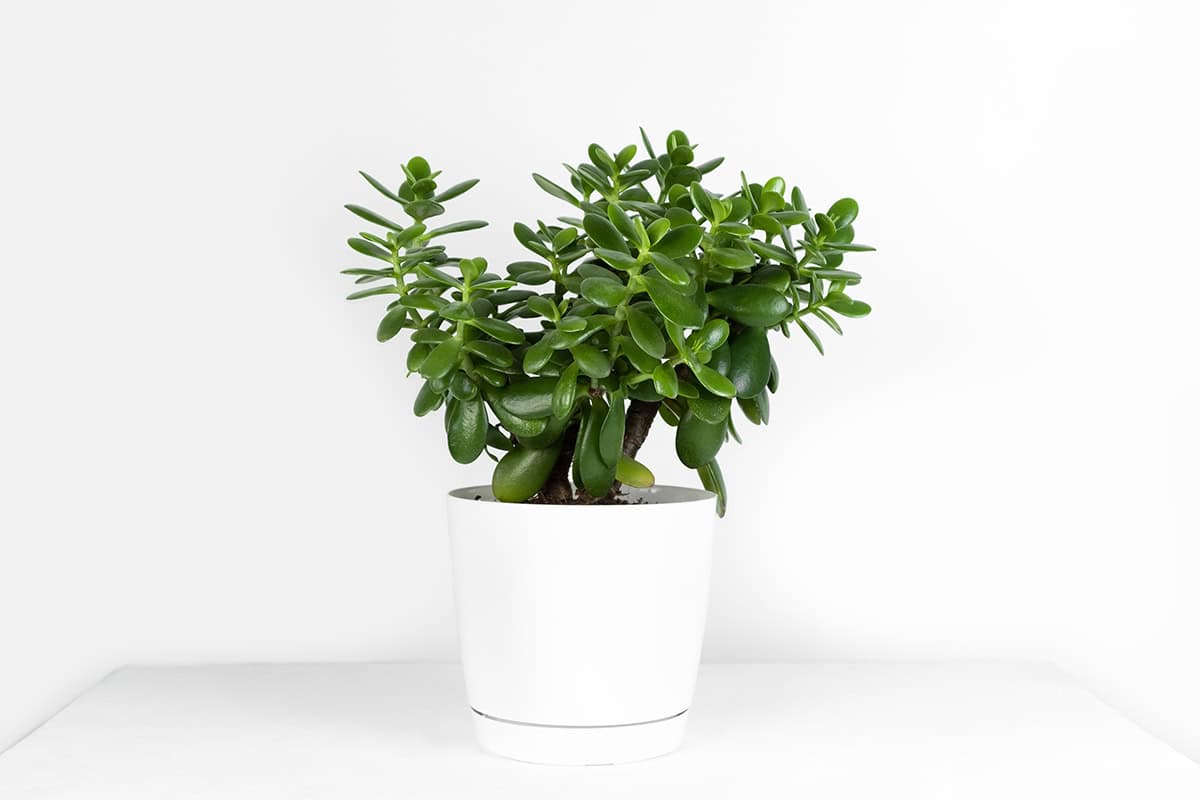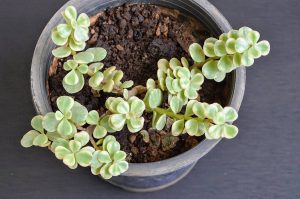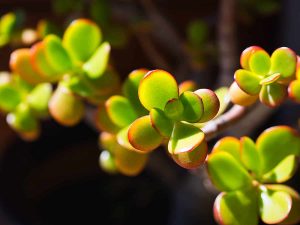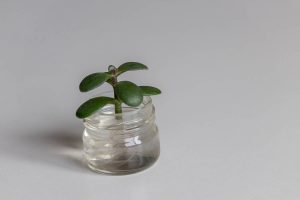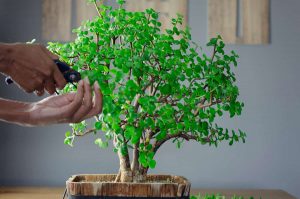If you’ve ever admired a friend’s chubby-leafed jade sitting in a sunny window, you’re not alone. Jade plants have a way of making any room feel a bit more alive. Here’s how you can grow one that’s just as healthy.
Table of Contents
Light

Jade plants thrive with 3 to 5 hours of direct sunlight daily. An east or west-facing window is perfect for providing this amount of light.
Artificial light is a good alternative. Twelve hours can replace natural light. Adjust your light source as the plant grows to ensure even coverage.
Pay attention to the light levels during different seasons. In winter, you might need to move your plant closer to the light to compensate for shorter days. Remember, adequate light is essential to maintain the jade plant’s color and shape.
Soil
Jade plants thrive in well-draining soil. Using a cactus or succulent potting mix suits these plants best. This mix prevents water from sitting around the roots, reducing the risk of root rot. It’s important to focus on drainage rather than moisture retention.
For a custom soil mix, combine standard topsoil with materials like perlite and coarse sand. These additives improve drainage and aeration. You can also include pea gravel or chicken grit for better results. Avoid soil with moisture-retaining additives to maintain a healthy environment.
When planting your jade plant, ensure the pot has drainage holes. This way, excess water escapes, keeping the roots dry. Waterlogged soil can harm your plant, so monitoring drainage is crucial. Always adjust your watering routine depending on the soil’s moisture level.
Choosing the right soil can significantly impact your jade plant’s growth and health. Prioritize well-drained media and steer clear of anything that retains excessive moisture. This attention to the soil will reward you with a thriving jade plant.
Water

Jade plants are succulents that thrive on minimal watering. They store water in their thick leaves. You should allow the soil to dry out completely in between waterings. This prevents overwatering, which can lead to root rot.
Check the soil moisture by inserting your finger into the soil. Water the plant if it feels dry up to an inch deep. If the plant starts to wrinkle, this may indicate that it needs water. Adjust your watering routine accordingly.
During the growing months of spring and summer, you can water more liberally. Reduce the frequency in fall and winter when the plant’s growth slows. Ensure the pot has drainage holes to prevent water from accumulating at the bottom.
Consistent routines are important. Slightly different conditions can require adjustments to your watering habits. Always consider the environment the plant is in, such as humidity and temperature. Proper watering supports healthy growth and a vibrant jade plant.
Temperature And Humidity

Jade plants thrive best in temperatures between 65°F and 75°F (18°C – 24°C). These conditions are often met in most households, making them excellent indoor plants. They are adaptable to various environments but must be protected from extreme cold. Once temperatures fall below 40°F (4°C), jade plants might experience freeze damage.
Maintain consistent temperatures for optimal growth. It’s important to avoid sudden drafts or temperature changes, which might stress the plant. If placing your plant near a window, consider the potential for drafts during different seasons.
Humidity is less of a concern for jade plants compared to temperature. They do well in average household humidity. While they can tolerate some dry air, you should be cautious of excessive humidity, which might lead to root rot if paired with overly wet soil.
When growing jade plants during colder months, keep them in a warm area. Indoor heating systems can create fluctuating humidity and temperatures. Keep an eye on conditions to ensure your jade plant remains healthy and vibrant throughout the year.
Fertilizer
Jade plants thrive with regular fertilization. During the active growth period, usually spring and summer, it’s best to apply a balanced liquid houseplant fertilizer. Opt for fertilizing every two to three months to encourage healthy development. Check the plant’s needs and adjust accordingly.
Pay attention to the type of fertilizer you choose. A flowering houseplant fertilizer works well. Dilution is crucial. Follow the manufacturer’s guidelines to prevent over-fertilizing, which can harm the plant’s roots. The frequency and concentration should match the plant’s current growth phase.
Avoid fertilizing jade plants in the winter. This is when their growth slows. Applying fertilizer during dormancy can lead to nutrient buildup, which isn’t beneficial. Monitoring the plant’s response is key to successful care.
Propagation

Jade plants are easy to propagate. This makes them a great choice for sharing with friends. You have two main methods to choose from: stem cuttings and leaf cuttings.
For stem cuttings, cut a healthy stem about 5-10 inches long. Make sure it’s from a vigorous part of the plant. Let the cut end dry for a few days before planting it in dry soil. This helps prevent rot.
Leaf cuttings are another option. Gently remove a leaf from the plant. Let it callous over for a few days. Once dry, place the leaf on top of well-drained soil.
Both methods require patience. Water only when the soil is completely dry. Adequate watering helps roots develop without causing rot.
Light plays a crucial role. Ensure the cuttings receive bright but indirect sunlight. This stimulates root growth.
Warm temperatures encourage success with propagation. Aim for a comfortable room temperature. This mimics the plant’s natural environment.
With time and proper care, you’ll see new growth. Quick response and vigilance ensure a healthy new jade plant.
Pruning

Pruning a jade plant is essential for maintaining its shape and promoting healthy growth. It’s best performed in spring. Use clean and sharp tools to prevent stem tearing.
Cut the stems just above a ring or node. This encourages new branches and keeps the plant compact. Pinch off new growth tips to promote even more branching.
Avoid heavy pruning in one go. Trim gradually to allow the plant to adjust. Remove damaged or weak stems for better air circulation. This reduces disease risk and improves vigor.
Regular pruning prevents the plant from becoming too leggy. It encourages a full and lush appearance. With proper care, your jade plant will thrive indoors.
Potting And Repotting
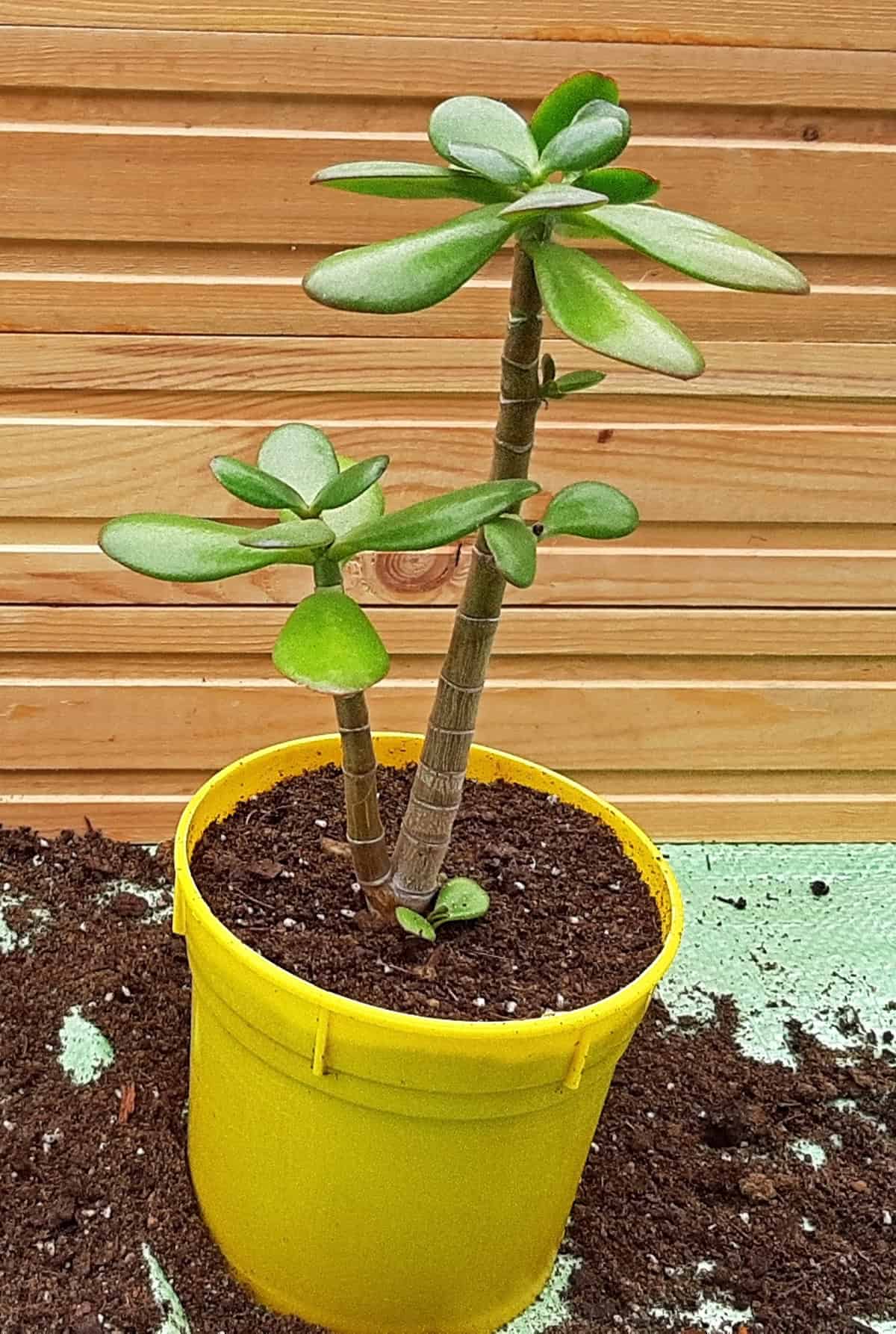
Jade plants thrive in well-draining potting mixes. Choose a mix designed for succulents. This usually contains a combination of sand, perlite, and soil. Avoid peat-based mixes to prevent excess moisture retention.
Select a pot with drainage holes. This is essential to prevent water accumulation, which could lead to root rot. If your pot doesn’t have a drainage option, consider using a liner inside to manage excess moisture.
Repotting is necessary every two to three years. This helps accommodate growth and refresh the soil. Spring is ideal for repotting when the plant begins its active growth phase. Handle the plant gently to avoid root damage.
When repotting, gently remove the plant and shake off old soil. Inspect for any damaged roots and trim if needed. Place the jade in the new pot, fill in with fresh soil, and water lightly to settle the soil.
Keep the plant out of direct sunlight just after repotting. This helps reduce stress and allows the plant to adapt to its new potting environment more comfortably. Once settled, gradually reintroduce it to its preferred lighting conditions.
Common Problems & Troubleshooting
Growing jade plants can be rewarding, but they come with challenges. You may encounter pests like mealybugs and spider mites. These insects often appear as small, white patches on leaves or stems. Regular inspection helps catch infestations early. Wiping leaves with a damp cloth or using insecticidal soap can reduce pest issues.
Watering is a common concern with jade plants. Overwatering can lead to yellowing, mushy leaves, and black spots on stems. Underwatering shows as shriveled, wrinkled leaves and leaf drop. Ensure the soil drains well to prevent root rot, a serious issue. It’s best to let the soil dry out between waterings.
Improper lighting can affect jade plants’ health. They prefer bright, indirect light. While they can tolerate low light, this may slow their growth. Adjust their placement if growth slows or leaves turn pale. By providing the right light and water balance, you minimize common issues.
Temperature changes can also stress jade plants. They thrive in stable temperatures, ideally between 65°F and 75°F. Avoid placing them near cold drafts or heat sources. Sudden temperature changes can cause leaf drop. With some attention to their environment, you can keep your jade plant healthy and thriving.
Jade Plant Varieties
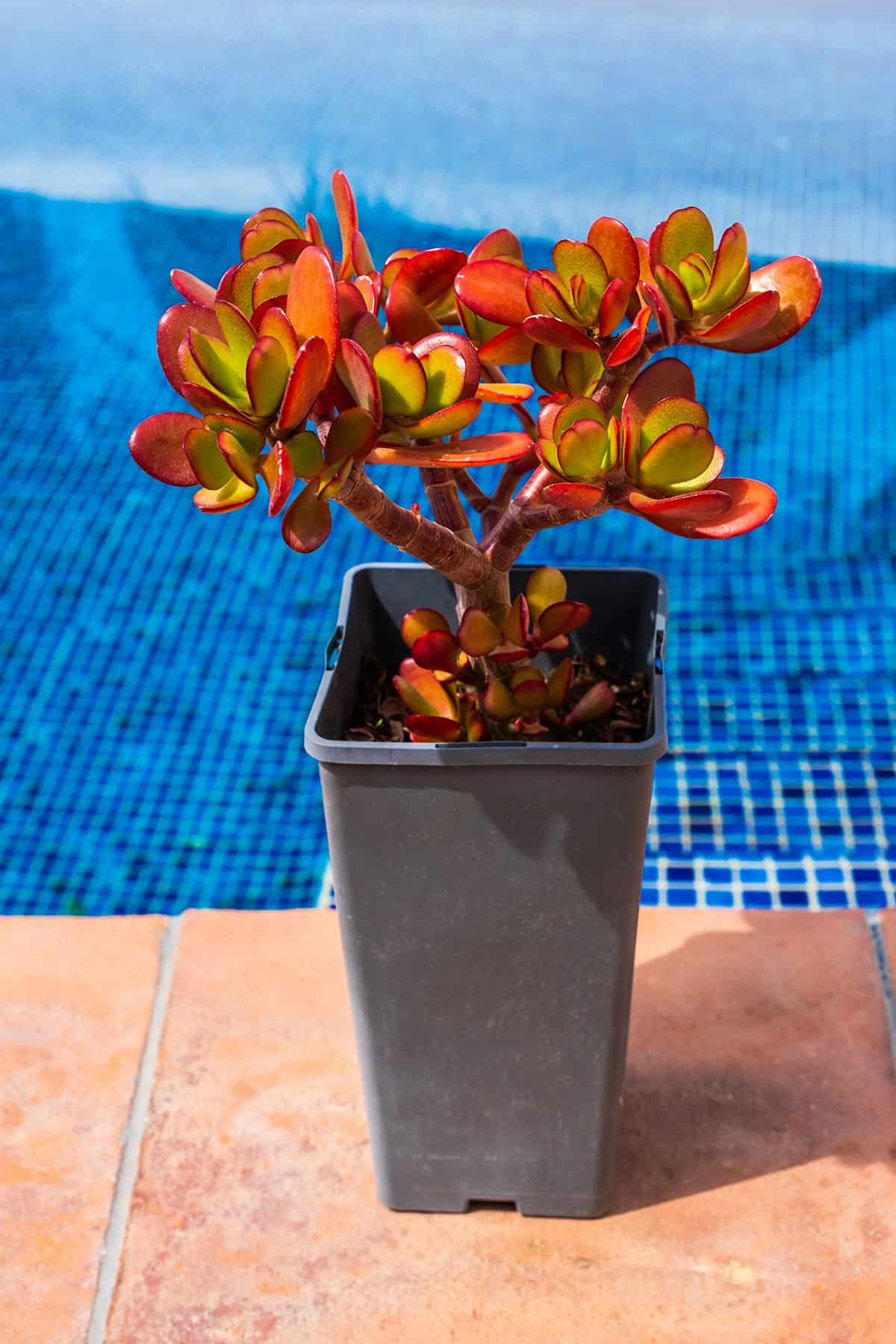
Jade plants offer several varieties that vary in shape, size, and leaf color. Some are more compact while others may spread wider. Exploring these options can enhance your collection.
One popular variety is the Crassula ovata ‘Hummel’s Sunset’. Its leaves have red-tinted edges with a golden hue, especially under bright light. It adds a touch of color to your home.
Crassula ovata ‘Gollum’ is known for its unique tubular leaves. These can resemble fingers or small trumpets. It’s a great option if you want a distinctive plant.
The Crassula ovata ‘Tricolor’ displays variegated leaves. They include shades of cream, green, and pink. This variety offers visual interest year-round.
Another eye-catching variety is Crassula ovata ‘Botany Bay’. It features a compact and bushy growth habit. This plant is perfect for small spaces or beginner growers.
Consider the Crassula ovata ‘Crosby’s Compact’ for a smaller option. It has densely packed, small leaves. It’s well-suited for limited indoor areas or tabletop displays.
Each jade plant variety can offer a different aesthetic. Choosing the right type depends on your space and light conditions. Select a variety that complements your home and satisfies your preferences.
